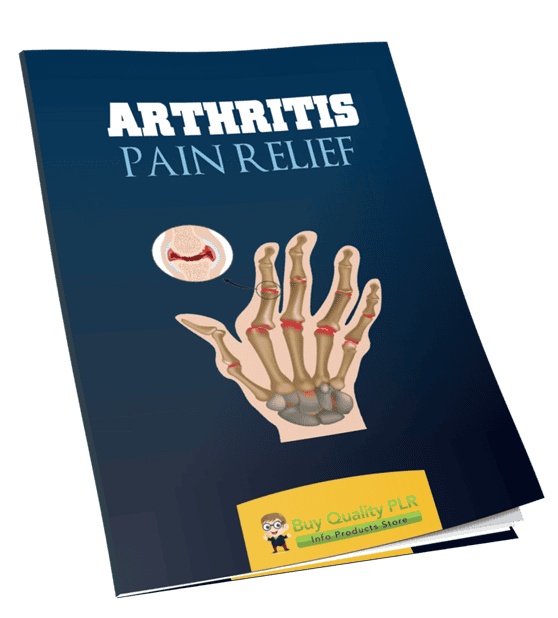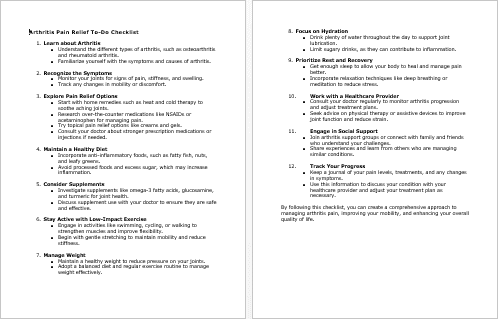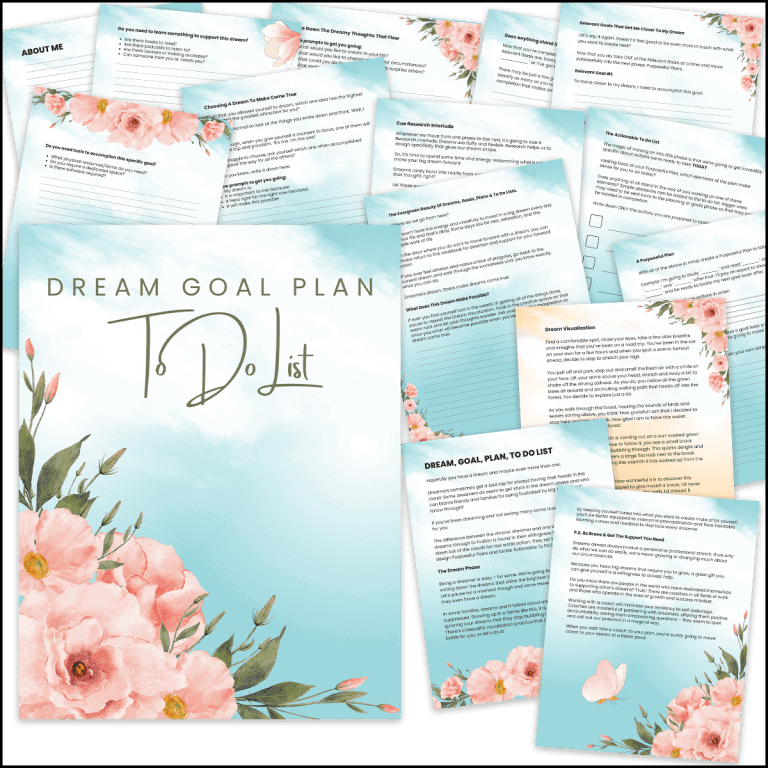
Arthritis Pain Relief PLR Course 30k Words
in Arthritis PLR , Health PLR , Pain PLR Ebooks , PLR Checklists , PLR eBooks , PLR eCourses , Premium PLR , Premium PLR eBooks , Premium PLR Reports , Premium White Label Brandable PLR Coaching Courses , Private Label Rights ProductsChoose Your Desired Option(s)
has been added to your cart!
have been added to your cart!
#arthritis #arthritispainrelief #plrcourse #healthandwellness #chronicpainmanagement #alternativetherapies #jointhealth #painrelieftips
Discover the Path to Managing Arthritis Pain and Reclaiming Your Life!
Are you or your audience struggling with arthritis pain? Do you want to help others understand arthritis and provide actionable strategies for relief? The “Arthritis Pain Relief PLR Course” is your ultimate resource to educate, empower, and improve the lives of those dealing with arthritis.
This comprehensive course provides in-depth insights into arthritis, proven pain management techniques, and lifestyle adjustments to reduce discomfort and improve mobility. Designed for anyone looking to take control of their arthritis journey, this course is packed with actionable steps that deliver results.
Presenting…
Arthritis Pain Relief PLR Course 30k Words
What You’ll Learn in This Course
Module 1: Understanding Arthritis and Its Impact
Gain a solid foundation in understanding arthritis and its effects on the body.
- What is Arthritis?
Learn about osteoarthritis and rheumatoid arthritis and how they affect joints. - Recognizing Symptoms:
Identify common signs like joint pain, stiffness, and swelling. - Causes of Arthritis:
Explore contributing factors such as genetics, injuries, and autoimmune conditions. - Daily Life Impact:
Understand how arthritis affects mobility, mental well-being, and quality of life.
Module 2: Effective Pain Management Techniques
Discover strategies to manage arthritis pain and reduce inflammation.
- Heat and Cold Therapy:
Learn when and how to use temperature-based therapies for relief. - Over-the-Counter Medications:
Explore how NSAIDs like ibuprofen and aspirin can ease pain and inflammation. - Topical Pain Relief:
Find out about creams and patches designed for targeted relief. - Consult Your Doctor:
Know when to seek prescription treatments or injections for advanced care.
Module 3: Natural Remedies and Lifestyle Changes
Embrace a holistic approach to arthritis pain relief.
- Anti-Inflammatory Foods:
Incorporate foods like leafy greens, nuts, and fish into your diet to support joint health. - Supplements for Relief:
Discover the benefits of omega-3s, glucosamine, turmeric, and other supplements. - Weight Management:
Learn how maintaining a healthy weight reduces strain on joints and alleviates pain. - Stay Hydrated:
Understand the importance of hydration for joint lubrication and overall health.
Module 4: Exercise and Physical Therapy
Move better, feel better with tailored physical activities.
- Gentle Stretching:
Practice easy stretches to maintain flexibility and reduce stiffness. - Low-Impact Exercises:
Explore swimming, walking, and other activities that are easy on the joints. - Strength Training:
Build muscle around joints to improve support and reduce daily pain. - Physical Therapy:
Discover when to seek professional guidance for personalized movement plans.
Module 5: Mental Well-Being and Stress Reduction
Manage the emotional toll of chronic pain.
- Deep Breathing Techniques:
Use breathing exercises to calm the mind and reduce pain perception. - Mindfulness and Meditation:
Practice mindfulness to improve focus and build emotional resilience. - Social Support:
Connect with others through support groups to reduce feelings of isolation. - Rest and Recovery:
Prioritize sleep and relaxation for optimal healing and pain management.
What’s Included in the PLR Course Package?
- Arthritis Pain Relief PLR Course: Over 28,000 words of expert content divided into practical modules.
- Checklist (410 Words):
A step-by-step guide to help users stay on track with their arthritis pain management plan. - FAQs (928 Words):
Answers to the most common questions about arthritis, providing clarity and actionable advice. - Professionally Written Sales Page (895 Words):
Ready-to-use content to start selling this valuable course immediately.
Who Can Benefit from This Course?
- Healthcare Professionals:
Offer this course to patients or clients for better arthritis management. - Content Creators:
Sell or repurpose this course to reach audiences interested in health and wellness. - Fitness Trainers & Therapists:
Educate clients on safe exercises and lifestyle adjustments to support joint health. - Coaches and Educators:
Use this course to create engaging workshops or online classes on arthritis care.
How You Can Profit from This PLR Product
Here are some ideas to monetize the “Arthritis Pain Relief” PLR course:
- Sell It as a Complete Course
Market it as a premium product for $47–$97 and provide life-changing value to your audience. - Bundle It with Related Products
Combine this course with fitness or wellness products to create a high-value package. - Create Membership Site Content
Use the course as exclusive content for a subscription-based site and earn recurring income. - Repurpose into Smaller Products
Turn the content into eBooks, guides, or blog posts to keep your audience engaged. - Use It as a Lead Magnet
Offer sections of the course for free to grow your email list and establish trust with your audience. - Flip It into a New Product
Customize the content, rebrand it, and sell it as a unique product under your name.
Why Choose This PLR Course?
- High-Quality Content:
Written by experts, thoroughly researched, and easy to customize. - Ready to Use:
Start selling or using the content immediately with minimal editing required. - Valuable Topic:
Arthritis affects millions worldwide—this course is a highly relevant and in-demand resource. - Flexible Licensing:
Enjoy the freedom to edit, rebrand, and sell this product as your own.
Special Launch Price: Only $14.99!
Take advantage of this limited-time offer and grab the Arthritis Pain Relief PLR Course today. Start making a difference in people’s lives while building your brand and generating income.
has been added to your cart!
have been added to your cart!
Here A Sample of Arthritis Pain Relief PLR Course
Welcome to the “Arthritis Pain Relief” course! This course is designed to help you understand arthritis, identify effective pain management strategies, and implement practical steps to reduce pain and improve mobility. Let’s dive in with a step-by-step guide to navigating your arthritis journey. Each module is packed with useful insights and actions to help you feel better and take control of your health.
Module 1: Understanding Arthritis and Its Impact
In this module, we’ll explore what arthritis is and how it affects your body. Knowledge is the first step to relief!
Step 1: Learn What Arthritis Is
Welcome to the first step of our course! Understanding what arthritis is and how it affects your body is crucial for effectively managing pain and improving quality of life. In this step, we will focus on the two most common types of arthritis—Osteoarthritis (OA) and Rheumatoid Arthritis (RA)—and provide insights into how they impact joints. Whether you’re a course creator working on educational content for a diverse, global audience, or you’re looking to deepen your understanding of arthritis, this step will give you a solid foundation.
Understanding Arthritis
Arthritis is a term that refers to a group of over 100 different types of diseases that cause inflammation in the joints, leading to pain, stiffness, and swelling. The inflammation can vary in intensity, and the symptoms can worsen over time, significantly impacting a person’s mobility and overall quality of life. The condition affects people of all ages and can occur due to a variety of reasons, including age, genetics, and injury.
In this section, we will break down two of the most common types of arthritis: Osteoarthritis (OA) and Rheumatoid Arthritis (RA). Both conditions affect the joints but in different ways, and understanding these differences will help you grasp the variety of challenges faced by individuals with arthritis.
Osteoarthritis (OA)
What is Osteoarthritis?
Osteoarthritis is the most common form of arthritis, affecting millions of people worldwide. It is often referred to as “wear-and-tear” arthritis because it typically develops as a result of the gradual breakdown of cartilage—the protective cushion that sits between your bones in a joint. Cartilage allows bones to glide smoothly over each other, and when it wears away, bones begin to rub against each other, causing pain, swelling, and stiffness.
How Osteoarthritis Affects the Joints
Osteoarthritis commonly affects joints that bear weight, such as the knees, hips, and spine, but it can also affect the hands and fingers. The main effects of OA on the joints include:
- Loss of Cartilage: As cartilage wears down, the bones start to rub against each other, causing inflammation and pain.
- Bony Growths (Osteophytes): As a response to cartilage loss, the body may form new bone growths around the joint, which can limit movement and cause discomfort.
- Joint Deformity: In advanced cases, the joint may become visibly deformed or misaligned, further impacting mobility.
- Stiffness and Pain: Movement becomes restricted due to the stiffness in the joints, and pain can intensify, particularly after periods of activity.
Risk Factors for OA
Several factors can increase the likelihood of developing osteoarthritis, including:
- Age: OA becomes more common as people age, particularly after the age of 45.
- Gender: Women are more likely to develop OA, especially after menopause.
- Obesity: Extra weight puts additional stress on weight-bearing joints, like the knees.
- Injury or Joint Overuse: Past injuries, especially if not properly healed, can increase the risk of developing OA.
- Genetics: A family history of OA can make someone more susceptible.
Rheumatoid Arthritis (RA)
What is Rheumatoid Arthritis?
Rheumatoid arthritis is a chronic autoimmune condition where the immune system mistakenly attacks the body’s own tissues, specifically the synovium—the lining of the joints. The immune system’s attack causes inflammation in the affected joints, which can lead to severe joint damage over time. RA can affect any joint in the body, and it often begins in smaller joints, such as those in the hands and feet, before progressing to larger joints like the knees, hips, and shoulders.
How Rheumatoid Arthritis Affects the Joints
Unlike osteoarthritis, which is primarily caused by physical wear and tear on the joints, rheumatoid arthritis is an autoimmune disorder that causes inflammation. The effects of RA on the joints include:
- Inflammation of the Synovium: The immune system attacks the synovium, leading to redness, swelling, and pain. This inflammation can spread to the surrounding tissues and damage the bones.
- Joint Deformities: Over time, inflammation can lead to the destruction of cartilage and bone, resulting in joint deformities that limit function.
- Symmetry: RA typically affects joints on both sides of the body in a symmetrical pattern. For instance, if one hand is affected, the other one often will be as well.
- Morning Stiffness: One of the hallmark signs of RA is stiffness that lasts for more than 30 minutes in the morning or after periods of inactivity.
Risk Factors for RA
Rheumatoid arthritis can affect anyone, but certain factors can increase the likelihood of developing RA, including:
- Gender: Women are more likely to develop RA than men.
- Age: Although RA can occur at any age, it typically begins between the ages of 30 and 60.
- Genetics: A family history of RA or certain genetic markers (such as the HLA-DR4 gene) can increase the risk of developing the condition.
- Smoking: Smoking is a significant risk factor for the development of RA, especially in individuals with a genetic predisposition.
Key Differences Between Osteoarthritis and Rheumatoid Arthritis
While both OA and RA affect the joints, there are several key differences that distinguish them:
- Cause:
- OA is primarily caused by physical wear and tear on the joints, while RA is an autoimmune disorder where the body’s immune system attacks the joints.
- OA is primarily caused by physical wear and tear on the joints, while RA is an autoimmune disorder where the body’s immune system attacks the joints.
- Age of Onset:
- OA typically occurs in older adults, especially after the age of 45, while RA often begins in younger individuals (30-60 years old).
- OA typically occurs in older adults, especially after the age of 45, while RA often begins in younger individuals (30-60 years old).
- Joints Affected:
- OA generally affects weight-bearing joints like the knees and hips, while RA can affect any joint, often beginning in smaller joints such as those in the hands and feet.
- OA generally affects weight-bearing joints like the knees and hips, while RA can affect any joint, often beginning in smaller joints such as those in the hands and feet.
- Inflammation:
- RA is marked by significant joint inflammation, often leading to swelling and warmth, while OA typically involves less inflammation, with pain being caused mainly by the wearing of cartilage.
- RA is marked by significant joint inflammation, often leading to swelling and warmth, while OA typically involves less inflammation, with pain being caused mainly by the wearing of cartilage.
- Pain Patterns:
- In RA, pain is often worse in the morning and improves with movement, while in OA, pain tends to worsen with activity and improves with rest.
Conclusion
Now that you understand the basics of arthritis, including the differences between osteoarthritis and rheumatoid arthritis, you are better equipped to appreciate how these conditions affect the joints. Recognizing the specific type of arthritis a person has is critical in determining the best course of treatment. In the next sections of this course, we will explore effective pain management strategies and treatments for both OA and RA, providing you with practical solutions to help alleviate discomfort and improve mobility.
Step 2: Recognize Symptoms
Welcome to Step 2 of our Arthritis Pain Relief course! In this section, we will focus on identifying the common symptoms of arthritis, including joint pain, stiffness, and swelling. Recognizing these symptoms is crucial for early diagnosis and effective management of the condition. Whether you’re creating a course for an international audience or expanding your knowledge of arthritis, understanding these symptoms will help you support those affected and offer practical advice.
Overview of Common Symptoms of Arthritis
Arthritis is a broad term that encompasses over 100 different conditions, but the most common symptoms across all forms of arthritis are joint pain, stiffness, swelling, and limited range of motion. While the intensity and frequency of these symptoms may vary depending on the type of arthritis, their presence is often an indication that something is wrong with the joints. Recognizing these symptoms early can help individuals seek appropriate treatment and improve their quality of life.
In this step, we will break down these symptoms into more detail, exploring how they manifest in various types of arthritis. Understanding these signs will help you create content that educates and empowers individuals dealing with arthritis, regardless of the region or the specific type of arthritis they have.
1. Joint Pain
What Is Joint Pain?
Joint pain is the most common and recognizable symptom of arthritis. It can range from mild discomfort to intense pain, often making it difficult for individuals to perform everyday tasks.
- Osteoarthritis (OA): In OA, joint pain typically occurs after activity and improves with rest. It’s often described as a deep, aching pain, which can worsen with movement. The pain is caused by the wear and tear of cartilage in the joints.
- Rheumatoid Arthritis (RA): In RA, joint pain can occur suddenly, often with swelling and warmth around the affected joint. The pain tends to be more persistent and is typically worse in the morning or after long periods of rest. RA is an autoimmune disease, and the pain is caused by inflammation within the joint.
Recognizing Joint Pain:
- Pain usually affects the area around the joint, but it may also spread to the muscles, ligaments, and tendons surrounding the joint.
- The pain can be sharp or dull, constant or intermittent, depending on the severity of the condition.
- In advanced cases, joint pain may be accompanied by fatigue, making the pain feel more overwhelming.
Key Signs to Look for:
- Location of Pain: The pain is typically localized around a specific joint or set of joints (e.g., knees, hips, hands, or wrists).
- Movement-Related Pain: In OA, pain may increase after activity (e.g., walking, climbing stairs, or lifting objects), while in RA, it may worsen after waking up or after long periods of inactivity.
- Pain Pattern: RA pain often occurs symmetrically, affecting both sides of the body, while OA typically affects one side more than the other.
2. Joint Stiffness
What Is Joint Stiffness?
Joint stiffness is a common symptom of arthritis that refers to a sensation of tightness or reduced flexibility in the affected joints. This stiffness is often the result of inflammation and damage to the joint tissues.
- Osteoarthritis (OA): Joint stiffness in OA is usually worst after waking up in the morning or after long periods of rest. It tends to improve after the joint is mobilized through movement or gentle exercise.
- Rheumatoid Arthritis (RA): In RA, stiffness is a hallmark symptom and tends to last longer than in OA. Morning stiffness, which can last for 30 minutes or more, is particularly common in RA. This is a result of inflammation in the synovial membrane, which lines the joints.
Recognizing Joint Stiffness:
- Stiffness can make it difficult to move the affected joint, leading to reduced range of motion.
- Stiffness is usually most pronounced in the morning, after waking up or after sitting or resting for a while.
- In severe cases, joint stiffness can cause deformities, where joints become misaligned or fixed in a particular position.
Key Signs to Look for:
- Duration of Stiffness: If the stiffness lasts for a long period, especially more than 30 minutes in the morning, it may indicate RA.
- Effect on Daily Activities: Stiffness in the joints may prevent the person from completing basic tasks such as gripping objects, walking, or even getting in and out of bed.
- Associated Symptoms: Stiffness in RA is often accompanied by redness, warmth, and swelling, whereas in OA, stiffness may occur without significant inflammation.
3. Joint Swelling
What Is Joint Swelling?
Swelling in the joints is a common symptom of arthritis and occurs when fluid accumulates in or around the joint. This inflammation can be caused by a variety of factors, including damage to the joint’s cartilage, synovium (lining), or the surrounding soft tissues.
- Osteoarthritis (OA): Swelling in OA tends to be mild and may only occur after the joint has been used extensively. It is often the result of bone growths (osteophytes) or soft tissue swelling around the affected joint.
- Rheumatoid Arthritis (RA): Swelling in RA is typically more pronounced and is caused by inflammation in the synovium, which can lead to joint deformities if left untreated. In RA, swelling may also affect multiple joints simultaneously and often appears suddenly.
Recognizing Joint Swelling:
- Swelling can make the joint appear larger or puffier than usual. It may feel warm to the touch and may be accompanied by redness around the joint.
- Swelling can restrict movement, making it painful or difficult to fully extend or bend the joint.
- In some cases, the swelling may lead to visible changes in the joint, such as a “bony” appearance or noticeable misalignment.
Key Signs to Look for:
- Symmetry of Swelling: In RA, swelling typically affects both sides of the body and may occur in pairs of joints (e.g., both wrists or both knees).
- Warmth and Redness: Swelling in RA may be accompanied by a noticeable warmth and redness, signifying active inflammation.
- Pitting Edema: In severe cases, the swelling may result in pitting edema, where pressing on the swollen area leaves a temporary indentation.
4. Limited Range of Motion
What Is Limited Range of Motion?
As arthritis progresses, the affected joints may lose their ability to move freely and fully. This loss of range of motion is often caused by pain, stiffness, swelling, or joint deformity.
- Osteoarthritis (OA): In OA, the loss of joint flexibility is primarily due to the breakdown of cartilage, which allows the bones to rub together. This friction can limit the movement of the joint.
- Rheumatoid Arthritis (RA): In RA, the inflammation of the joint tissues can lead to joint damage, and over time, the joint may become less able to move. Inflammation can cause the synovium to thicken, leading to the formation of scar tissue, which further restricts movement.
Recognizing Limited Range of Motion:
- People with arthritis may experience difficulty performing simple tasks that require joint movement, such as walking, standing up, or reaching for objects.
- Limited range of motion may be more noticeable after periods of inactivity or first thing in the morning.
- Over time, this limitation can become more severe, particularly if arthritis is left untreated.
Key Signs to Look for:
- Difficulty Performing Daily Tasks: Individuals may find it hard to perform activities like lifting a cup, brushing their teeth, or walking without assistance.
- Progressive Restriction: As the disease progresses, the range of motion becomes more restricted, and the person may be unable to fully straighten or bend the joint.
- Joint Deformities: In advanced cases of RA, the joint may deform, leading to permanent restrictions in movement.
Conclusion
In this step, you’ve learned to recognize the common symptoms of arthritis, including joint pain, stiffness, swelling, and limited range of motion. Identifying these symptoms early is crucial for proper diagnosis and treatment. Understanding these signs will not only help you create valuable content for individuals affected by arthritis but will also enhance your ability to empathize with their struggles and guide them towards effective relief strategies.
As you move forward in this course, keep these symptoms in mind as we explore treatment options and management strategies that can help reduce the impact of arthritis on daily life.
Step 3: Discover the Causes
Welcome to Step 3 of our Arthritis Pain Relief course! In this section, we will explore the key factors that contribute to arthritis. Understanding the root causes of arthritis is essential for both prevention and management of the condition. Whether you are designing a course for an international audience or looking to enhance your knowledge of arthritis, this step will provide you with a deeper understanding of the underlying causes of the condition.
Arthritis is a complex disease, and its origins can vary from person to person. Some factors are within our control, while others are genetically predetermined. In this step, we will focus on four major causes: genetics, age, injury, and autoimmune responses. Recognizing these causes can help in the creation of more targeted and effective treatment and prevention strategies.
1. Genetics
What Are Genetic Factors?
Genetics play a significant role in the development of certain types of arthritis, particularly rheumatoid arthritis (RA) and osteoarthritis (OA). Some individuals inherit genes that make them more susceptible to developing arthritis. These genetic factors may affect how the body responds to inflammation, joint stress, and other factors that contribute to the development of arthritis.
- Rheumatoid Arthritis (RA): Research shows that certain genes, such as the HLA-DR4 gene, increase the risk of developing RA. These genes are involved in the immune system’s response and play a role in triggering inflammation in the joints.
- Osteoarthritis (OA): While OA is primarily associated with aging and joint wear and tear, genetics also play a role in its development. Studies have shown that people with a family history of OA are more likely to develop the condition themselves. Specific genes involved in cartilage formation and repair can influence the progression of OA.
Recognizing Genetic Influences:
- Family History: If arthritis runs in the family, there is a higher likelihood that you may develop the condition, especially RA and OA. A family history of autoimmune diseases may also indicate a predisposition to RA.
- Early Onset: People who develop arthritis at a younger age may have a genetic predisposition to the disease. In some cases, the severity of arthritis can also be more pronounced in individuals with a genetic predisposition.
Key Signs to Look for:
- Multiple Family Members Affected: If arthritis affects several generations of your family or multiple members within the same generation, it’s an indication that genetics may be a significant factor.
- Presence of Specific Genetic Markers: Genetic testing can sometimes reveal markers associated with increased risk for arthritis. Understanding these markers can help predict susceptibility to certain types of arthritis, particularly RA.
2. Age
What Is the Role of Age in Arthritis?
Age is one of the most significant risk factors for developing arthritis, particularly osteoarthritis. As people age, the natural wear and tear on their joints increases, which can lead to the breakdown of cartilage, resulting in arthritis.
- Osteoarthritis (OA): OA is commonly associated with aging, as it involves the gradual breakdown of cartilage in the joints. The cartilage, which provides cushioning and support, wears down over time due to daily use and repetitive motion. This leads to pain, stiffness, and swelling in the affected joints.
- Rheumatoid Arthritis (RA): Although RA can develop at any age, it most commonly begins between the ages of 30 and 60. Age increases the likelihood of immune system changes that can contribute to the development of autoimmune diseases, including RA.
Recognizing the Impact of Age:
- Joint Deterioration: As we age, the cartilage in the joints becomes thinner, and the bones may begin to rub against each other, leading to pain and stiffness, particularly in weight-bearing joints like the knees, hips, and spine.
- Increased Risk in Older Adults: Older adults are more likely to develop OA due to prolonged wear on their joints. In addition, other age-related conditions, such as obesity or previous injuries, can increase the risk of arthritis.
Key Signs to Look for:
- Gradual Onset of Symptoms: OA symptoms typically worsen slowly over time, with pain increasing gradually and affecting more joints as the individual ages.
- Common Affected Joints: In OA, the knees, hips, and hands are commonly affected due to the continuous wear and tear that occurs with age.
- Age-Related Changes in the Body: As people age, the body’s ability to repair joint tissue decreases, making it harder to recover from joint injuries or inflammation, which can lead to arthritis.
3. Injury
How Does Injury Contribute to Arthritis?
Injuries, especially those involving the joints, can increase the risk of developing arthritis later in life. Joint injuries—whether from sports, accidents, or repetitive motion—can cause lasting damage to the cartilage, ligaments, and other tissues that support the joint. This damage may lead to arthritis, particularly osteoarthritis.
- Osteoarthritis (OA): Injury to a joint can increase the risk of OA, as the damage to the cartilage accelerates the natural wear and tear process. For example, an individual who experiences a torn ligament or meniscus in the knee may develop OA in that knee many years later.
- Post-Traumatic Arthritis: This is a specific type of arthritis that develops after a joint injury. Even if the injury heals, the damage to the joint can lead to the development of arthritis over time, as the joint’s ability to move smoothly is compromised.
Recognizing Injury-Induced Arthritis:
- History of Joint Trauma: Individuals who have experienced a joint fracture, sprain, or dislocation are at higher risk of developing arthritis in the affected joint later in life.
- Symptoms in Previously Injured Joints: Joint pain and stiffness in areas where there was a past injury may indicate post-traumatic arthritis, especially if the injury occurred many years ago.
Key Signs to Look for:
- Joint Pain After Injury: Pain in a joint that was injured in the past may resurface as arthritis develops.
- Worsening Symptoms Over Time: After an injury, symptoms such as pain, swelling, and limited range of motion can worsen over time, signaling the onset of arthritis.
- Post-Injury Degeneration: Injuries that damage the cartilage or ligaments can lead to faster joint degeneration, increasing the risk of arthritis.
4. Autoimmune Responses
What Are Autoimmune Responses?
An autoimmune response occurs when the body’s immune system mistakenly attacks its own healthy tissues. In the case of rheumatoid arthritis (RA), the immune system targets the synovium, which is the lining of the joints, leading to inflammation and joint damage.
- Rheumatoid Arthritis (RA): RA is the most common type of arthritis caused by an autoimmune response. The immune system mistakenly attacks the synovium, causing inflammation, which leads to pain, swelling, and eventually damage to the joint. Over time, this chronic inflammation can cause deformities and permanent joint damage.
- Other Autoimmune Diseases: In addition to RA, there are other forms of autoimmune arthritis, such as psoriatic arthritis, lupus, and ankylosing spondylitis. Each of these conditions involves an abnormal immune response that affects the joints and other tissues in the body.
Recognizing Autoimmune-Induced Arthritis:
- Sudden Onset of Symptoms: Autoimmune arthritis, like RA, often has a sudden onset of symptoms, with joint pain, swelling, and stiffness appearing quickly.
- Systemic Symptoms: Autoimmune arthritis is often accompanied by systemic symptoms like fatigue, fever, and weight loss, which are less common in osteoarthritis.
Key Signs to Look for:
- Symmetrical Joint Involvement: In RA, the symptoms often affect joints on both sides of the body (e.g., both wrists, both knees).
- Morning Stiffness: One of the hallmarks of autoimmune arthritis is prolonged morning stiffness, which can last for over 30 minutes.
- Other Autoimmune Symptoms: Conditions like RA can be associated with other autoimmune symptoms, such as dry eyes, mouth, and skin rashes, which can help differentiate autoimmune arthritis from other types.
Conclusion
In this step, you’ve learned about the various causes of arthritis, including genetic factors, age, injury, and autoimmune responses. Understanding these causes is crucial for course creators and individuals alike, as it helps identify the root of the condition and can guide preventive measures, early interventions, and effective treatment options.
As we move forward in this course, you will gain insights into how these causes interact with each other and contribute to the progression of arthritis. This knowledge will empower you to create informative content that resonates with those dealing with arthritis, offering them solutions for relief and better management.
We’re also giving these extra bonuses
Arthritis Pain Relief – Checklist
Arthritis Pain Relief – FAQs

Arthritis Pain Relief – Salespage Content

Package Details:
Word Count: 28 632 Words
Number of Pages: 111
Arthritis Pain Relief – Bonus Content
Checklist
Word Count: 410 words
FAQs
Word Count: 928 words
Salespage Content
Word Count: 895 words
Total Word Count: 27 490 Words
Your PLR License Terms
PERMISSIONS: What Can You Do With These Materials?
Sell the content basically as it is (with some minor tweaks to make it “yours”).
If you are going to claim copyright to anything created with this content, then you must substantially change at 75% of the content to distinguish yourself from other licensees.
Break up the content into small portions to sell as individual reports for $10-$20 each.
Bundle the content with other existing content to create larger products for $47-$97 each.
Setup your own membership site with the content and generate monthly residual payments!
Take the content and convert it into a multiple-week “eclass” that you charge $297-$497 to access!
Use the content to create a “physical” product that you sell for premium prices!
Convert it to audios, videos, membership site content and more.
Excerpt and / or edit portions of the content to give away for free as blog posts, reports, etc. to use as lead magnets, incentives and more!
Create your own original product from it, set it up at a site and “flip” the site for megabucks!
RESTRICTIONS: What Can’t You Do With These Materials?
To protect the value of these products, you may not pass on the rights to your customers. This means that your customers may not have PLR rights or reprint / resell rights passed on to them.
You may not pass on any kind of licensing (PLR, reprint / resell, etc.) to ANY offer created from ANY PORTION OF this content that would allow additional people to sell or give away any portion of the content contained in this package.
You may not offer 100% commission to affiliates selling your version / copy of this product. The maximum affiliate commission you may pay out for offers created that include parts of this content is 75%.
You are not permitted to give the complete materials away in their current state for free – they must be sold. They must be excerpted and / or edited to be given away, unless otherwise noted. Example: You ARE permitted to excerpt portions of content for blog posts, lead magnets, etc.
You may not add this content to any part of an existing customer order that would not require them to make an additional purchase. (IE You cannot add it to a package, membership site, etc. that customers have ALREADY paid for.)
Share Now!
















